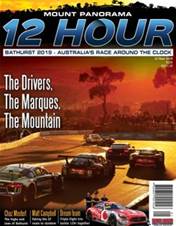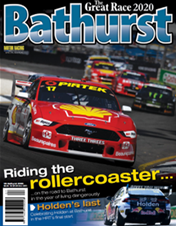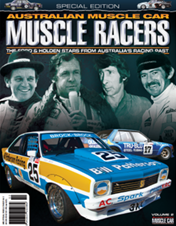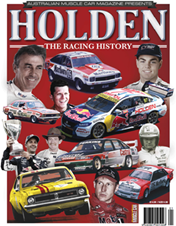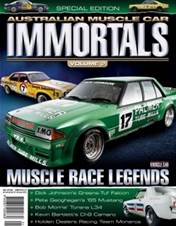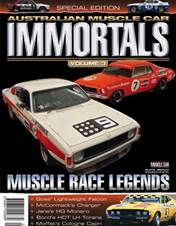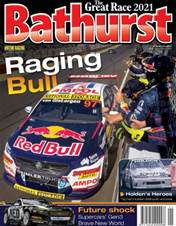For a concept long described as being ‘made for television’, Bathurst’s Top 10 shootout has proven to be extraordinary popular with trackside fans, too.
The single-lap run-off for pole position at Australia’s most popular car race happens so late on Saturday afternoon of race weekend you’d think spectators would already be downing their second schooner at the Knickerbocker Hotel or cooking up a storm for dinner back at the campsite. Yet try finding a place to plonk your fold-up chair on Pit Straight or across the top at 5.30pm on race eve, much less a spot on the fence.
Truth be known, building a weekend trackside audience has long been a key reason for its existence... in addition to creating a pre-race TV spectacle.
The Bathurst shootout, far from being a fly-by-night gimmick, took place for the 45th time in 2022. Yes, incredibly, it’s now in its sixth decade. But then there was always multi-faceted strategic logic behind its instigation way back in 1978.
The key stakeholders in staging the Bathurst 1000 in the late 1970s were race organiser, the Australian Racing Drivers Club, telecaster, the Seven Network, and event naming rights sponsor James Hardie Industries. Their foresight saw the Top 10 shootout go beyond a weekend tradition to being part and parcel of Supercars racing.
The premise was simple: the fastest 10 drivers from qualifying would get the road to themselves and be pitted against the clock. The fastest man would take pole position for the Great Race, bragging rights and a not insignificant amount of prizemoney.
A key member of the organising committee was Seven executive and commentator Mike Raymond. Raymond admits today that the shootout was his baby.
“Yes, I’m the person responsible for the naming of it and the concept itself,” he says. “We were really looking for something to televise on the Saturday of race weekend to help stimulate the crowd and attract the crowd. A top 10 shootout seemed to me a better way to go, with the slowest going first and the fastest car going last. And the name came from one of the great shows on television, Hogan’s Heroes. I forget what channel it was on at the time, Channel 10, I think. But we had Hardies the race sponsor, so it worked well. And it still works today.”
Had it not worked, Raymond could have been excused for trotting out Hogan’s Heroes’ character Sergeant Schultz’s catchphrase, ‘I know nothing! Nothing!’ in distancing himself from the idea. But Raymond remembers that the fellow committee members embraced his idea from the start and this was instrumental in its success.
“Everyone went along with it,” he says. “My background was in the showbizzy type of speedway where you put on a show.”

The first Hardies Heroes, in 1978, was actually held on the Friday afternoon, for reasons lost in the sands of time, but switched to its now-traditional Saturday slot the next year. Cars had two attempts in the early years, but that also soon fell by the wayside.
“One run worked better than two because it was immediate,” Mike Raymond continued. “You didn’t get a second chance at it. It was just a straight up, do your best. And that’s what determined the grid for the race. Two runs filled out more air time, but didn’t have the same excitement about it.
“In the early days it was generally held before lunch on Saturday because the teams had the insane fixation of changing engines and gearboxes between the shootout and final practice on Saturday afternoon.”
Seven would edit up the show and it would run just before the evening news for the maximum prime time audience, as is the case today with the live shootout.
Holding Hardies Heroes on the Saturday brought other benefits to the event other than pre-promoting Sunday’s race and telecast. It gave many more spectators a reason to make a weekend out of the Bathurst trip, a major step towards building the mega campout at Mount Panorama today.
We’ve established that the top 10 run-off worked a treat for the race organiser, telecaster, sponsor and spectators. But what about the teams themselves? Were they onboard? Surely it disrupted more than one crusty old team manager’s long-established pre-race routine?
“They were definitely onboard,” Raymond continues. “One would only expect the top performers to be keen to give their sponsors another opportunity for guaranteed TV time.”
Dick Johnson certainly fell into that category. Johnson is uniquely placed to comment as he holds the record for most Top 10 shoot-out appearances at Bathurst, 21, including contesting that very first running, in 1978, as lead driver of the two-car Bryan Byrt Ford team. AMC asked Johnson, who would soon become synonymous with the shootout for his death-defying trip through trees at Forrest’s Elbow in 1983, what he thought of this very different qualifying concept upon first hearing about it. Was he thinking, ‘Beauty Newk, more TV time for the sponsors’?

Actually, for the straight-talking Johnson, the new activity appealed for another reason.
“Mate, any time there was the chance to get my arse in the car at Bathurst I was all for it. I thought it was a great concept at the time. It was new. It was different. Apart from all of that, it was the chance to have the track to yourself rather than flogging around there amongst a field of 60-odd cars on the road at once all trying to do a quick time.
“There was a big disparity in those days between the V8s and the smaller class cars so you were always getting held up. If you made it into the top 10 run-off it gave you the opportunity to be on the track by yourself and to have a crack at getting pole, which you might not have got during all-in qualifying.”
Dick did make it through to what was listed in the 1978 event program as ‘Top 10 cars Timed’, along with teammate John French in the second ‘reverse Cobra-liveried’ Byrt XC. The pair ultimately gridded up in sixth and 10th.
The two Queenslanders were joined by a star-studded line-up of other local Group C-era greats in the shootout that first year: Allan Grice, Peter Brock, Bob Morris, Allan Moffat and Colin Bond. Legendary internationals Jack Brabham and Derek Bell flavoured proceedings, with Tasmanian Garth Wigston, with the greatest respect, the only non big name driver of the 10 pioneers.
Cars were lined up on Pit Straight perpendicular to the direction of travel ahead of the two runs, with drivers standing beside them, creating a sense of theatre and TV spectacle. Well, nine of them did. Allan Moffat, typically going against the grain, sat in his XC Cobra to avoid wetting the soles of his shoes. Drivers drew marbles – actually, the numbered ‘pills’ used in Kelly Pool – from Morris’ crash helmet to determine the running order.

You have reached an article available exclusively to Premium members.
JOIN FROM AS LITTLE AS $6.66 A MONTH* FOR INSTANT ACCESS.
Already a member? Log in
* Billed annually at $79.90






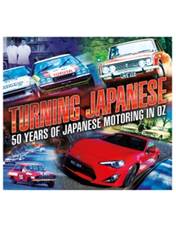
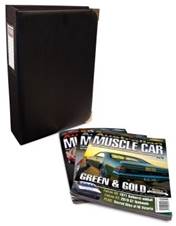


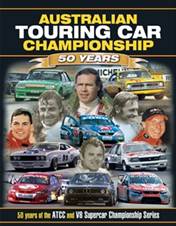

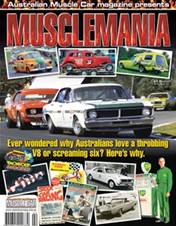
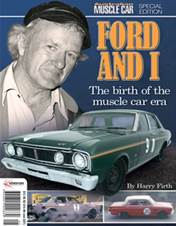
.jpg&q=70&h=226&w=176&c=1&s=1)
